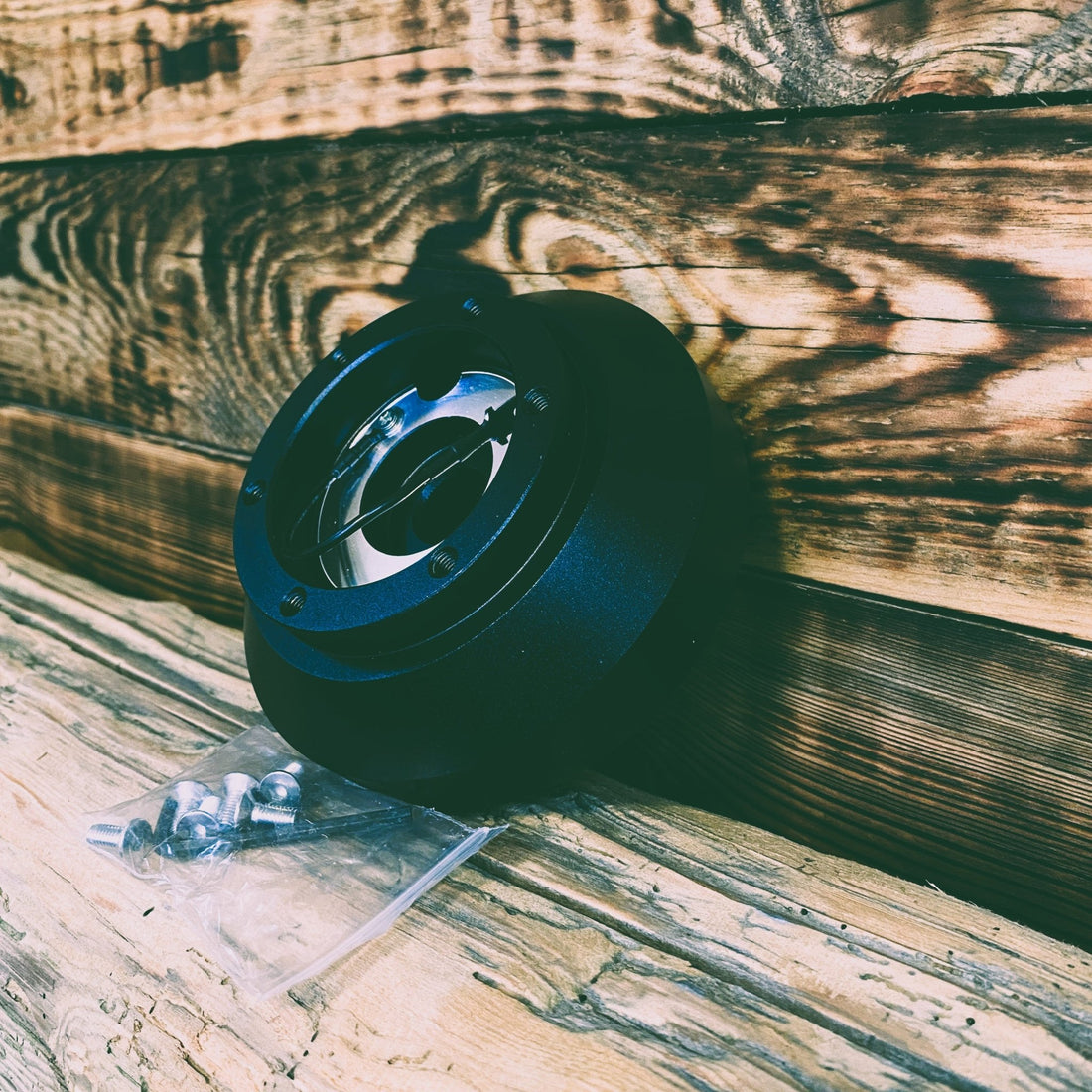
Steering Wheel Hub Adapter Guide
Share
A Comprehensive Guide to Steering Wheel Hub Adapter
Steering wheel hub adapter is an essential component for anyone looking to customize their vehicle's steering wheel. Whether you're upgrading to an aftermarket wheel for better performance, aesthetics, or both, understanding hub adapters is crucial for a smooth installation process. This guide will walk you through everything you need to know about steering wheel hub adapters, from their function and types to installation tips and compatibility considerations.
What is a Steering Wheel Hub Adapter?
A steering wheel hub adapter, also known as a boss kit or hub kit, is a component that connects an aftermarket steering wheel to the steering column of a vehicle. Since steering wheels and steering columns are not universally compatible, the hub adapter serves as the intermediary, ensuring a secure and proper fit.
Why Use a Steering Wheel Hub Adapter?
1. Customization:
- Aesthetic Appeal: Aftermarket steering wheels come in a variety of styles, materials, and colors, allowing you to personalize your vehicle's interior.
- Improved Grip: Performance-oriented steering wheels often offer better grip and ergonomics.
2. Functionality:
- Quick Release Mechanism: Some hub adapters come with a quick-release feature, which is popular in racing for quick driver changes and as a theft deterrent.
- Enhanced Driving Experience: Aftermarket steering wheels can provide better feedback and control, enhancing the driving experience.
Types of Steering Wheel Hub Adapters
1. Fixed Hub Adapters:
These are the most common type and provide a simple, solid connection between the steering wheel and the column.
2. Quick Release Hub Adapters:
These adapters allow the steering wheel to be easily removed and reattached, offering added security and convenience, especially in racing applications.
3. Short Hub Adapters:
Designed to reduce the distance between the driver and the steering wheel, providing a sportier, more connected driving feel.
4. Collapsible Hub Adapters:
These adapters are designed with safety in mind, as they can collapse in the event of an impact, reducing the risk of injury.
Choosing the Right Hub Adapter
1. Compatibility:
- Vehicle Make and Model: Ensure the hub adapter is compatible with your vehicle's make, model, and year.
- Steering Wheel Brand: Check compatibility with the brand and model of your aftermarket steering wheel.
2. Material:
- Durability: Look for hub adapters made from high-quality materials like billet aluminum or steel for longevity and reliability.
- Finish: Consider the finish (e.g., anodized, powder-coated) to match your steering wheel and interior aesthetics.
3. Features:
- Quick Release: Decide if you need a quick-release mechanism based on your usage (daily driving vs. racing).
- Collapsibility: Consider a collapsible hub for added safety.
Installation Tips
1. Preparation:
- Disconnect the Battery: To avoid accidental airbag deployment, always disconnect the battery before starting the installation.
- Remove the Existing Steering Wheel: Use the appropriate tools to remove the factory steering wheel. This often involves loosening bolts and carefully detaching the airbag (if present).
2. Installing the Hub Adapter:
- Attach the Hub: Align the hub adapter with the steering column and attach it using the provided hardware. Ensure it is securely fastened.
- Install the Steering Wheel: Attach the aftermarket steering wheel to the hub adapter, making sure it is properly aligned and tightened.
3. Final Checks:
- Reconnect the Battery: Once everything is securely in place, reconnect the battery.
- Test Functionality: Ensure the steering wheel operates smoothly and that all electronic functions (horn, buttons) work correctly.
Common Issues and Troubleshooting
1. Alignment Problems:
- If the steering wheel is not aligned properly, you may need to readjust the hub adapter or seek professional assistance.
2. Electronic Malfunctions:
- Ensure all connectors are properly reattached and check for any damaged wires during installation.
3. Noise or Looseness:
- Double-check that all bolts and screws are tightened to the specified torque settings to avoid any rattling or looseness.
Conclusion
Steering wheel hub adapters are a vital component for anyone looking to upgrade their vehicle's steering wheel. By understanding the different types, compatibility considerations, and installation procedures, you can ensure a seamless and effective customization. Whether for aesthetic enhancement, performance improvement, or safety features, selecting the right hub adapter and properly installing it can transform your driving experience.
Feel free to reach out with any questions or share your experiences in the comments below. Happy driving!
